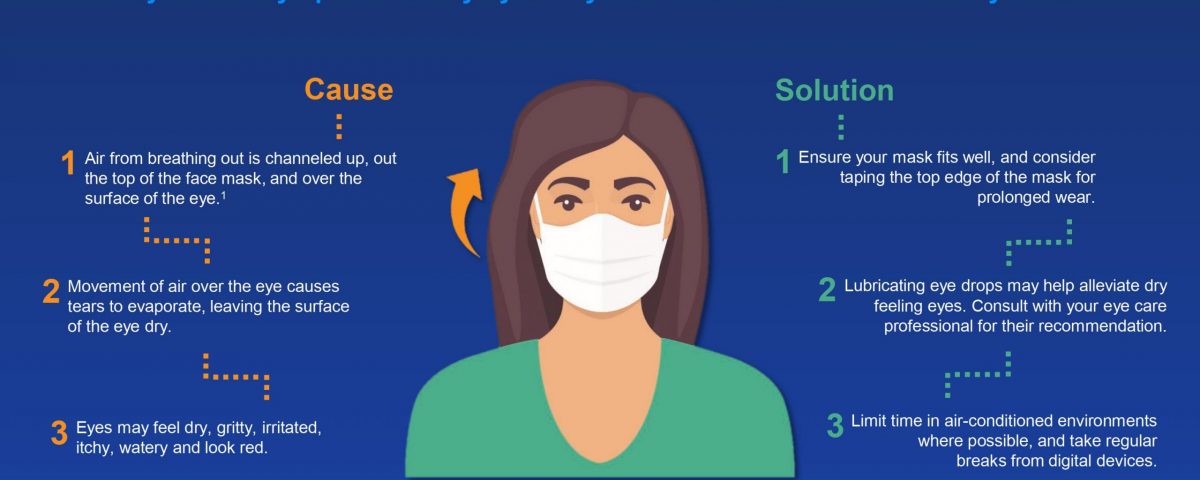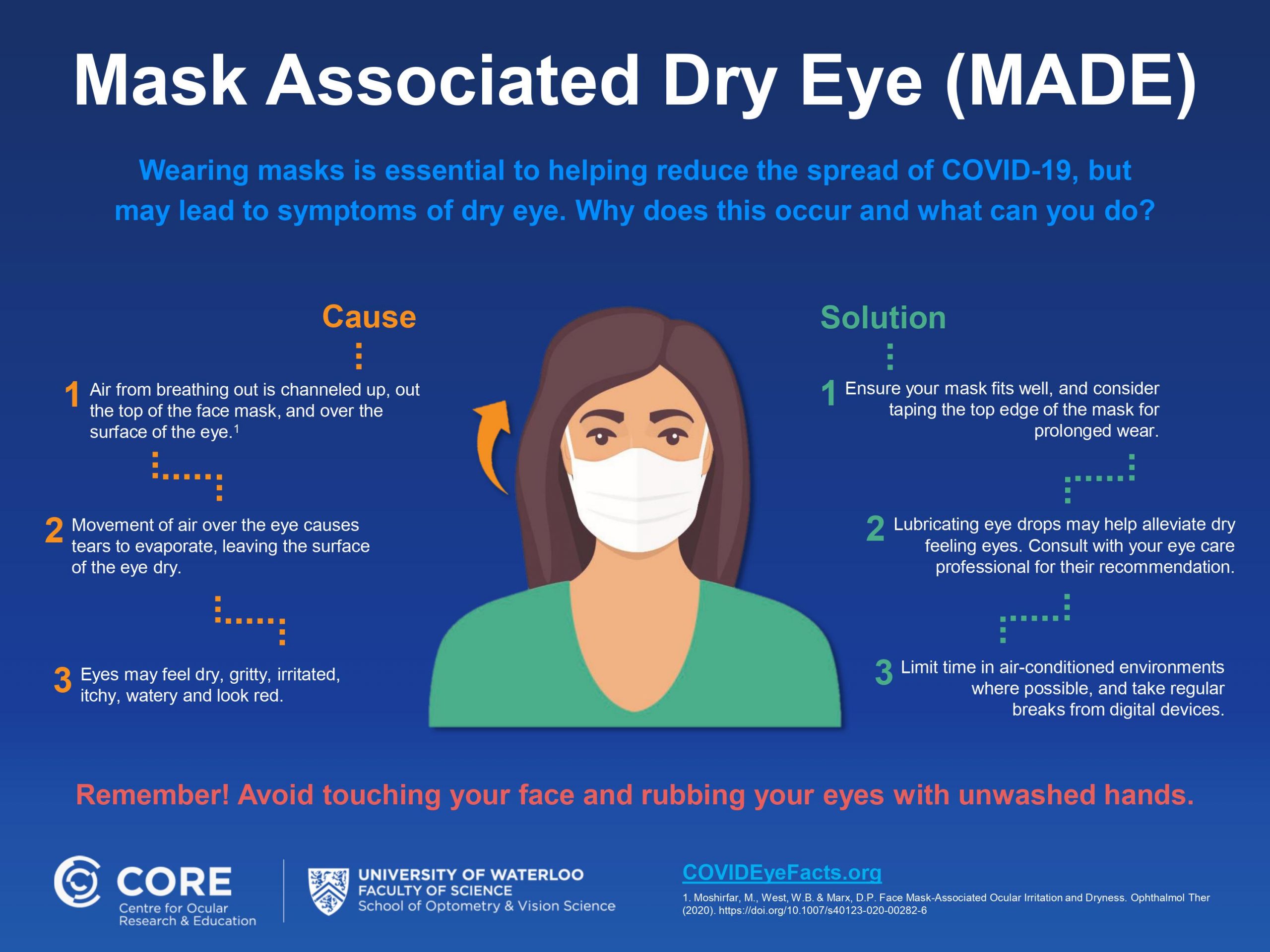MADE: A New Coronavirus Concern

ScanFitPRO Offers Novel Method to Custom Scleral Lenses
September 16, 2020
March 2019 Update Newsletter
December 22, 2020Just as the world is growing comfortable wearing facemasks, some are complaining about new or worsening symptoms of dry eye disease.
Dr. Darrell White MD, a Cleveland ophthalmologist, blogged that during this pandemic he observed, “Even for a high-volume dry eye center, there sure were a ton of new cases coming in.” He found the likely culprit hanging from the ears of his patients, and termed the condition MADE (Mask-Associated Dry Eye). Facemasks significantly reduce the outward spread of air, but if masks do not fit properly, they leave space either from the bridge of the nose, or the sides of the mask to create a flow of air upward to the eyes. Mask wearers who notice their eyeglasses fogging are experiencing this diverted airflow. Exhaled breath may travel from under the mask across the surface of the eye, evaporating tear film and irritating the eye. Individuals wearing contact lenses, like many KC patients, are especially likely to experience discomfort.
Dry eye disease is not the only concern. MADE may encourage increased eye rubbing and face touching behaviors. Avoiding including coronavirus.
Doctors recommend a few tips to reduce the effects of MADE. Wear a mask with a pliable nose wire that conforms to the face. Use lubricating drops to lessen the effects of dry eye disease; your doctor can recommend a brand that will help. If you are wearing contact lenses or working in an air-conditioned setting or if you spend hours in front of a computer screen, take frequent breaks and blink in order to replenish your eye’s natural tear film. Ask your eyecare professional for more tips if you believe you have MADE.
Celeste Y.Calderon





